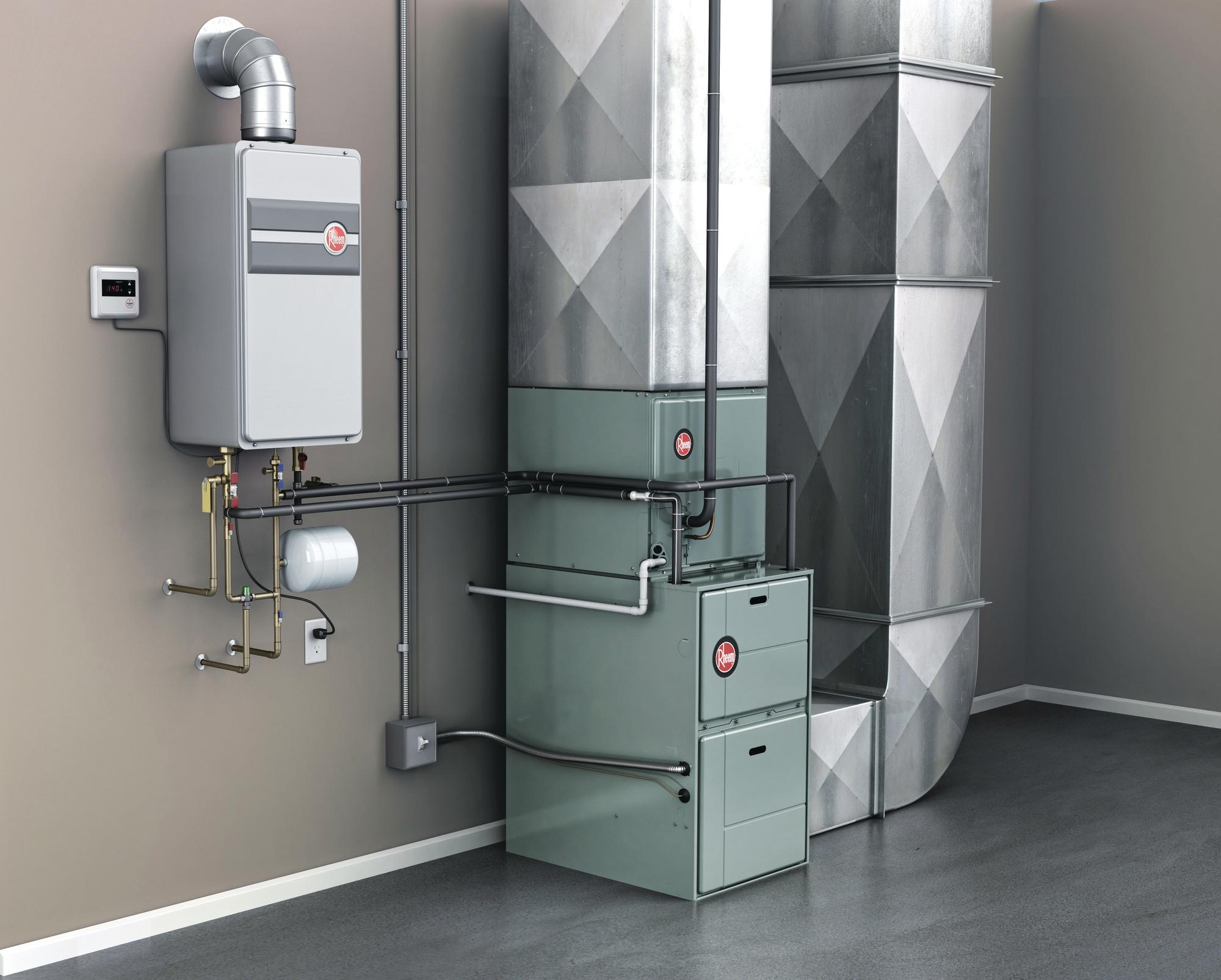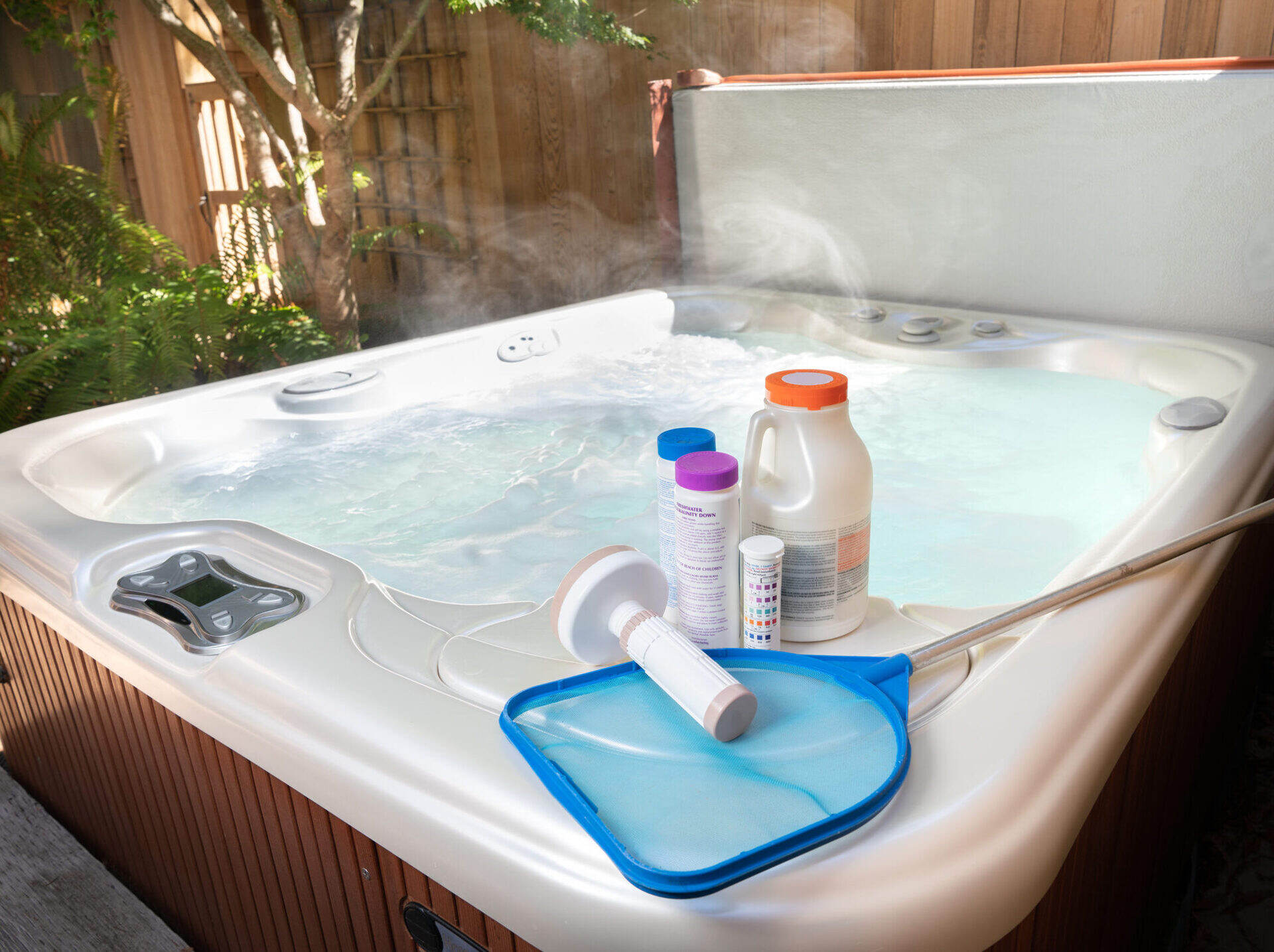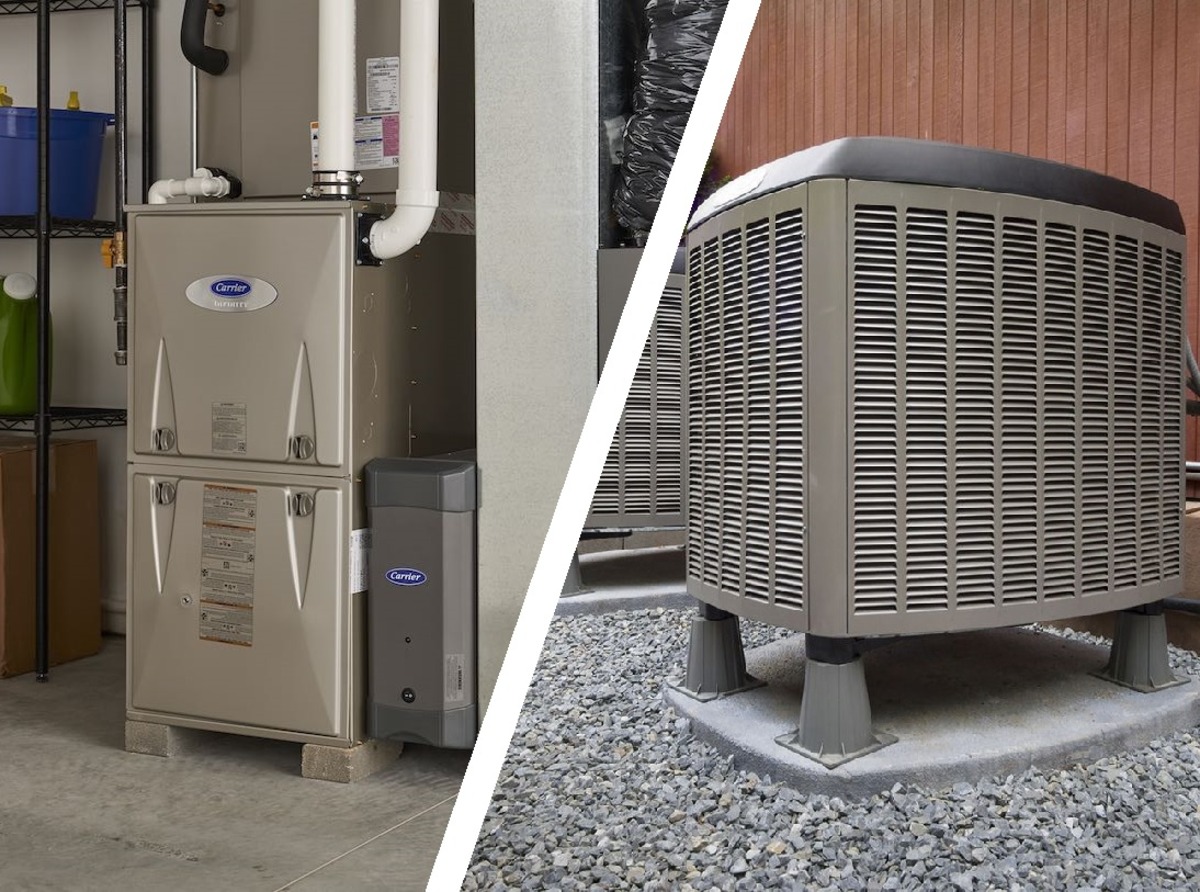Home>Home Maintenance>How To Add Air Conditioning To A House With Hot Water Heat


Home Maintenance
How To Add Air Conditioning To A House With Hot Water Heat
Modified: March 6, 2024
Learn how to add air conditioning to your house with hot water heat system. Discover effective home maintenance tips to keep your home cool and comfortable.
(Many of the links in this article redirect to a specific reviewed product. Your purchase of these products through affiliate links helps to generate commission for Storables.com, at no extra cost. Learn more)
Introduction
Welcome to our comprehensive guide on how to add air conditioning to a house with hot water heat. If you have a home with hot water heat and have been dreaming of enjoying cool and comfortable temperatures during the hot summer months, you’re in the right place. We understand that staying cool and comfortable is crucial for your overall well-being and enjoyment of your home. With the information provided in this article, you’ll learn about the pros and cons of adding air conditioning to a house with hot water heat and discover the steps involved in the installation process.
Many homes with hot water heat systems do not have a central air conditioning system in place. While hot water heat is an efficient and cost-effective way to keep your home warm during the winter, it can leave you sweltering in the summer months. Adding air conditioning to your home not only improves your comfort but can also increase the value of your property.
However, before diving into the installation process, it’s important to understand the pros and cons of adding air conditioning to a house with hot water heat. By considering these factors, you can make an informed decision about whether air conditioning is the right choice for your home.
Key Takeaways:
- Adding air conditioning to a house with hot water heat can increase comfort, indoor air quality, and property value. However, it may come with installation costs, space considerations, and energy consumption to consider.
- Before adding air conditioning, assess your home’s cooling needs and choose the right system. Proper preparation, installation, and maintenance are crucial for a seamless integration with your hot water heat system.
Read more: How To Add Central Air To Forced Air Heating
Pros and Cons of Adding Air Conditioning to a House with Hot Water Heat
Adding air conditioning to a house with hot water heat comes with its own set of advantages and disadvantages. Let’s take a closer look at the pros and cons to help you make an informed decision:
Pros:
- Increased Comfort: The most obvious benefit of adding air conditioning to your home is the enhanced comfort it provides. You’ll be able to maintain a cool and comfortable indoor environment, even during the hottest days of the year.
- Improved Indoor Air Quality: Air conditioning systems typically have built-in filters that help remove dust, pollen, and other airborne irritants, improving the overall indoor air quality of your home.
- Increased Property Value: Adding air conditioning to your home can increase its market value. Many prospective buyers consider air conditioning to be a desirable feature, especially in warmer climates.
- Year-Round Climate Control: With a combined system of hot water heat and air conditioning, you’ll have the flexibility to regulate the temperature and humidity of your home all year round, providing comfort in any season.
Cons:
- Installation Costs: Adding air conditioning to a house with hot water heat can be a more complex and costly process compared to homes with existing ductwork. The installation may require additional labor and materials.
- Space Considerations: Depending on the type of air conditioning system you choose, you may need to allocate space for the installation of ductwork or other components. This could impact the aesthetic appeal or available space in your home.
- Energy Consumption: Air conditioning systems consume electricity, which can increase your monthly energy bills. It’s important to choose an energy-efficient unit and consider the long-term energy costs involved.
- Maintenance and Repairs: Like any mechanical system, air conditioning systems require regular maintenance and occasional repairs. It’s important to factor in these ongoing costs when considering the addition of air conditioning to your home.
By carefully weighing these pros and cons, you can determine whether adding air conditioning to your house with hot water heat is the right choice for your specific needs and circumstances. With the right planning, installation, and maintenance, you can enjoy the benefits of a cool and comfortable home all year round.
Assessing the Cooling Needs of Your Home
Before proceeding with the installation of air conditioning in your house with hot water heat, it’s important to assess the cooling needs of your home. Taking the time to understand your home’s specific requirements will help you choose the appropriate air conditioning system and ensure optimal performance. Here are some factors to consider:
Read more: What Is A Hot Air Heating System
1. Square Footage:
Determine the total square footage of your home, as this will be a key factor in selecting the right air conditioning system. Larger homes may require multiple units or a zoning system to adequately cool the entire space.
2. Insulation and Windows:
The quality of insulation in your home and the type of windows you have can significantly impact its cooling needs. Well-insulated homes with energy-efficient windows will require less cooling compared to homes with poor insulation and older windows.
3. Number of Occupants:
The number of people living in your home can also affect the cooling requirements. More occupants will generate additional heat and humidity, necessitating a larger cooling capacity.
4. Exposure to Sunlight:
Consider the orientation of your home and the amount of direct sunlight it receives. Homes with excessive sunlight exposure may require a higher cooling capacity to counteract the additional heat gain.
5. Climate:
Take into account the climate in which you live. Hotter and more humid climates will require a more powerful cooling system to maintain comfortable indoor temperatures.
6. Existing Hot Water Heating System:
Consider the compatibility of your hot water heating system with the air conditioning system you plan to install. Consult with a professional to ensure a seamless integration and proper functioning of both systems.
By evaluating these factors, you can make an informed decision about the cooling needs of your home and select the appropriate air conditioning system to ensure maximum comfort and efficiency.
Selecting the Right Air Conditioning System
Once you have assessed the cooling needs of your home, it’s time to select the right air conditioning system for your house with hot water heat. There are several options available, each with its own advantages and considerations. Here are some key factors to consider when choosing the right air conditioning system:
1. Central Air Conditioning:
If your home has existing ductwork or if you’re willing to invest in installing ductwork, a central air conditioning system may be the best choice. This system uses a network of ducts to distribute cooled air throughout your home. It offers consistent cooling and the ability to control temperatures in each room or zone.
2. Ductless Mini-Split Systems:
If ductwork installation is not feasible or you prefer a more flexible cooling solution, consider ductless mini-split systems. These systems consist of an outdoor unit connected to one or more indoor units. They provide individual temperature control for each zone without the need for ductwork.
3. Hybrid Heat Pump Systems:
For homeowners looking to maximize energy efficiency, hybrid heat pump systems are worth exploring. These systems integrate both a traditional furnace or hot water heating system with a heat pump for both heating and cooling capabilities.
4. Energy Efficiency:
Look for air conditioning systems with high energy efficiency ratings. Energy Star certified units can significantly reduce your energy consumption and save on utility costs over time. Consider the seasonal energy efficiency ratio (SEER) when comparing different systems.
5. Size and Capacity:
Ensure that the air conditioning system you choose is sized correctly for your home. Undersized units may struggle to cool your space efficiently, while oversized units can lead to excessive energy use and reduced comfort. Consult with a professional to determine the appropriate size for your home.
6. Noise Levels:
Consider the noise levels of the air conditioning system, especially if you have bedrooms or living spaces close to the outdoor unit or indoor units. Look for systems with low noise ratings to ensure a peaceful living environment.
Take your time to research and consult with HVAC professionals to make an informed decision. Consider your budget, specific requirements, and long-term energy savings when selecting the right air conditioning system for your house with hot water heat. By choosing the right system, you can enjoy reliable and efficient cooling for years to come.
Preparing Your Home for Air Conditioning Installation
Before the installation process can begin, it’s important to prepare your home for the air conditioning system. Proper preparation ensures a smooth and efficient installation process. Here are some steps to follow:
1. Clearing the Installation Area:
Ensure that the area where the indoor unit or ductwork will be installed is clear of any obstructions. Remove furniture, decor, and any other items that could impede the installation process.
2. Checking Electrical Capacity:
Verify that your home’s electrical system can handle the additional load of the air conditioning system. Consult with an electrician to ensure that the electrical capacity is sufficient and consider any necessary upgrades or modifications.
Read more: How To Add A Sunroom To A House
3. Assessing Hot Water Heat Compatibility:
If you are integrating the air conditioning system with a hot water heating system, ensure that the two systems can work together effectively. Consult with a professional to ensure compatibility and make any necessary adjustments.
4. Ensuring Proper Ventilation:
Ensure that there is proper ventilation for the air conditioning system, especially if you are installing a ducted central air conditioning system. Make sure the ductwork is installed correctly and that there are no blockages or leaks.
5. Securing Permits and Approvals:
Check with your local authorities to determine if any permits or approvals are required for the installation of the air conditioning system. It’s essential to comply with local regulations and obtain the necessary permits before the installation begins.
6. Clear Communication with the Installers:
Prior to the installation, communicate your specific requirements and expectations to the installers. Discuss any concerns or questions you may have to ensure a clear understanding between you and the installation team.
By following these preparation steps, you can ensure that your home is ready for the air conditioning installation process. This will help streamline the installation and minimize any potential disruptions. With proper preparation, your home will be well-equipped to accommodate the new air conditioning system and provide optimal comfort for years to come.
Installing Ductwork or Ductless Systems
The installation of air conditioning in a house with hot water heat will typically involve either the installation of ductwork or the implementation of a ductless system. The choice between these two options depends on the specific requirements of your home and your personal preferences. Let’s explore the installation process for each:
Installing Ductwork:
If you have chosen a central air conditioning system that requires ductwork, the installation process will involve the following steps:
- Assessment and Planning: The HVAC technician will assess your home’s layout and determine the best locations for placing the air registers and return air vents. They will also evaluate the feasibility of routing ductwork through your walls or ceiling.
- Ductwork Fabrication: The technician will measure and cut the necessary ductwork pieces to fit your home’s specific requirements. They will then connect the sections and seal the joints to prevent any air leaks.
- Ductwork Installation: The technician will carefully install the completed ductwork, ensuring that it is properly secured and supported. They will route the ducts to each room or zone, connecting them to the main air conditioning unit.
- Insulation and Sealing: Once installed, the technician will insulate and seal the ductwork to prevent any energy loss and maintain optimal performance. This includes insulating exposed ducts in unconditioned spaces such as attics or crawl spaces.
- Testing and Balancing: After installation, the technician will perform tests to ensure proper airflow and balancing throughout your home. This involves adjusting the dampers and registers to ensure even cooling in each room or zone.
Implementing Ductless Systems:
For homes that do not have existing ductwork or prefer a more flexible cooling solution, implementing a ductless system is a great option. The installation process for ductless systems typically involves the following steps:
- Location Selection: The HVAC technician will determine the optimal locations for placing the indoor units, considering factors such as room configuration, aesthetics, and airflow distribution.
- Mounting Indoor Units: The technician will securely mount the indoor units on the selected walls or ceilings. They will also install the necessary brackets and ensure proper electrical connections.
- Connecting Refrigerant Lines: The refrigerant lines that connect the indoor units to the outdoor unit will be carefully installed and insulated to prevent any energy loss. The lines are usually routed through a small hole in the wall.
- Installing Outdoor Unit: The outdoor unit will be placed in a suitable location, typically on a concrete pad or mounted on a wall bracket. The technician will ensure proper electrical connections and refrigerant line connections.
- Testing and Commissioning: Once the installation is complete, the technician will test the system, check for any refrigerant leaks, and ensure proper operation. They will also provide instructions on how to use and maintain the ductless system.
Whether you choose to install ductwork or opt for a ductless system, it is crucial to hire a licensed HVAC professional to ensure proper installation and optimal performance of your air conditioning system.
Connecting the Air Conditioning System to Hot Water Heat
Connecting the air conditioning system to your hot water heat system is a crucial step in ensuring the compatibility and functionality of both systems. This process may require the expertise of a professional HVAC technician. Here are the key steps involved in connecting the air conditioning system to hot water heat:
Read more: How To Add Heated Floors In A Bathroom
1. Assessing Compatibility:
The first step is to assess the compatibility of your hot water heat system with the air conditioning system you plan to install. Different systems may require specific connections and adjustments to ensure they can work together harmoniously.
2. Installing a Dual-Purpose Heat Pump:
If you’re looking for a more integrated solution, you may consider installing a dual-purpose heat pump. These systems can provide both heating and cooling by utilizing the hot water from the existing hot water heat system. A heat pump extracts heat from the air or ground and directs it to either heat or cool your home.
3. Connecting the Refrigerant Lines:
If you’re connecting a traditional air conditioning system to hot water heat, the HVAC technician will connect the refrigerant lines between the outdoor unit and the indoor coil. The refrigerant carries the heat exchange process, absorbing and releasing heat to cool your home.
4. Integrating the Control Systems:
The control systems of the air conditioning and hot water heat systems need to be integrated for seamless operation. This may involve wiring connections and programming adjustments to ensure both systems can work together efficiently and maintain desired comfort levels.
Read more: How To Heat A House With A Fireplace
5. Balancing Airflow and Water Flow:
Ensuring proper airflow and water flow is essential for optimal performance. The HVAC technician will balance airflow through the ductwork and make sure that the water flow in the hot water heat system is not disrupted by the air conditioning system’s connections.
6. Testing and Adjusting:
Once the connections are made, the technician will test the system to ensure that both the air conditioning and hot water heat systems are functioning properly. They will make any necessary adjustments to temperature settings and control parameters to achieve the desired comfort and efficiency levels.
It’s important to engage a professional HVAC technician with experience in both air conditioning and hot water heat systems to ensure a seamless and efficient connection. They will have the knowledge and expertise to properly assess compatibility, make the necessary connections, and fine-tune the systems for optimal performance.
Testing and Adjusting the Air Conditioning SystemOnce the air conditioning system is installed in your house with hot water heat, thorough testing and adjusting are essential to ensure its proper operation, performance, and efficiency. This step allows you to fine-tune the system and make any necessary adjustments. Here are the key aspects involved in testing and adjusting the air conditioning system:
1. System Start-up:
The HVAC technician will start up the air conditioning system and closely monitor its operation. They will check for any abnormal sounds, vibrations, or unusual smells that may indicate a problem. If any issues are detected, they will diagnose and address them accordingly.
2. Temperature and Airflow Verification:
The technician will measure and verify the temperature and airflow at different registers to ensure they meet the desired levels. This ensures that each room or zone receives the appropriate cooling capacity and maintains a comfortable temperature.
3. Thermostat Calibration:
The thermostat plays a crucial role in controlling the air conditioning system. The technician will calibrate the thermostat to ensure accurate temperature readings and proper communication with the air conditioning unit. This ensures efficient and precise temperature control.
4. Refrigerant Pressure Check:
The technician will measure the refrigerant pressure to ensure it falls within the manufacturer’s recommended range. Incorrect refrigerant levels can affect the system’s performance and lead to efficiency issues. If necessary, the technician will add or remove refrigerant to achieve the optimal pressure.
5. Airflow Balance and Ductwork Inspection:
The technician will assess the airflow balance throughout the ductwork by measuring airflow at different registers. They will adjust dampers or registers as needed to achieve even cooling throughout your home. They will also inspect the ductwork for any leaks, blockages, or insulation issues that could impact the system’s efficiency.
6. Efficiency and Energy Consumption Assessment:
The technician may perform additional tests to assess the system’s energy efficiency. This may involve measuring power consumption, evaluating the system’s ability to dehumidify the air, and checking for any energy-saving features or settings that can be optimized.
7. Customer Education:
As part of the testing and adjusting process, the technician will provide you with essential information on how to operate and maintain the air conditioning system. They will explain proper usage, recommended maintenance tasks, and any troubleshooting tips to help you maximize the system’s performance and longevity.
Thorough testing and adjusting of the air conditioning system ensure that it functions optimally, providing efficient and reliable cooling for your home. By engaging a professional HVAC technician for this important step, you can identify and resolve any issues early on, ensuring a comfortable and trouble-free experience with your new air conditioning system.
Maintenance and Troubleshooting Tips for Combined Systems
Maintaining a combined air conditioning and hot water heat system is key to ensuring its longevity, efficiency, and optimal performance. Regular maintenance and timely troubleshooting can help identify and resolve issues before they escalate. Here are some essential maintenance and troubleshooting tips for your combined systems:
1. Regular Filter Cleaning/Replacement:
Clean or replace the air filters regularly to maintain proper airflow and prevent dust and debris buildup. Clogged filters can reduce the system’s efficiency and strain the equipment, leading to potential issues.
Read more: How To Add A Porch To Your House
2. Keep Outdoor Unit Clear:
Regularly remove any debris or vegetation around the outdoor unit to ensure proper airflow. Clearing away leaves, dirt, and other obstructions helps the unit run efficiently and reduces the risk of overheating.
3. Monitor and Adjust Thermostat Settings:
Keep an eye on your thermostat settings to ensure they are appropriate for your comfort needs and energy efficiency goals. Adjust the temperature settings as needed to avoid excessive cooling or heating.
4. Check for Water Leaks:
Inspect the areas around your indoor unit, pipes, and fittings for any signs of water leaks. If you notice water pooling or dampness, it could indicate a leak or condensation issue that needs to be addressed promptly to avoid further damage.
5. Regularly Inspect Ductwork:
Periodically inspect the ductwork for leaks, loose connections, or restricted airflow. If you identify any issues, have them repaired promptly to minimize energy loss and ensure proper cooling and heating distribution.
6. Schedule Professional Maintenance:
Schedule annual maintenance with a licensed HVAC professional to ensure thorough inspections, cleaning, and tuning of your combined system. This comprehensive maintenance can help identify and address any potential issues before they lead to major breakdowns.
7. Troubleshooting Common Issues:
If you encounter any problems with your combined system, such as inadequate cooling, strange noises, or uneven heating, consult the user manual or contact a professional HVAC technician. They can provide guidance on basic troubleshooting steps and assist in diagnosing and resolving more complex issues.
8. Timely Repairs:
If you notice any issues that require professional attention, such as refrigerant leaks, strange odors, or malfunctioning components, don’t delay the repairs. Prompt action can prevent further damage and improve the overall performance and lifespan of your system.
By following these maintenance and troubleshooting tips, you can ensure that your combined air conditioning and hot water heat system operates efficiently, provides optimal comfort, and lasts for years to come. Regular maintenance and timely troubleshooting are key to preventing costly repairs and maximizing the lifespan of your equipment.
Conclusion
Adding air conditioning to a house with hot water heat is an excellent way to enhance comfort and enjoy a cool indoor environment during hot summer months. While the installation process may have its complexities, the benefits of a combined system are well worth the effort. By considering the pros and cons, assessing your home’s cooling needs, selecting the right air conditioning system, and properly preparing and connecting the systems, you can achieve optimal comfort and efficiency.
Regular maintenance and troubleshooting are crucial for the longevity and performance of your combined system. By following essential maintenance tips and promptly addressing any issues, you can ensure that your system operates smoothly, saving energy and preventing costly repairs.
Remember to consult with licensed HVAC professionals who have experience with both air conditioning and hot water heat systems. Their expertise will ensure that the installation and maintenance processes are carried out effectively, meeting your specific requirements and maximizing the efficiency of your system.
In conclusion, with the right guidance and professional assistance, you can successfully add air conditioning to your home with hot water heat, creating a comfortable and enjoyable living space all year round. So, don’t let the heat hold you back – take the next steps to transform your home into a cool oasis of comfort.
Frequently Asked Questions about How To Add Air Conditioning To A House With Hot Water Heat
Was this page helpful?
At Storables.com, we guarantee accurate and reliable information. Our content, validated by Expert Board Contributors, is crafted following stringent Editorial Policies. We're committed to providing you with well-researched, expert-backed insights for all your informational needs.



